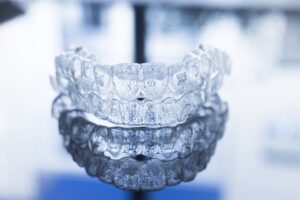
Invisalign is a discreet teeth-straightening technique, and offers a compelling solution. In this article, we’ll explore the benefits of Invisalign compared to traditional braces. Although Invisalign is a fantastic option, it’s vital to understand its limitations, cost, and the discipline required for successful treatment.
What Is Invisalign, And How Does It Work?
As an orthodontist like our friends at John Redmond Orthodontics can explain, Invisalign uses a series of custom-made aligners to gradually improve teeth alignment. These aligners are specifically tailored for each individual, ensuring a comfortable fit. They are nearly invisible in the mouth, which makes them a popular choice for those seeking a low-profile teeth-straightening option. Invisalign aligners are 3D scanned and crafted with precision to achieve optimal results.
What Are Braces, And How Do They Compare To Invisalign?
Traditional braces consist of a metal and wire lattice work that applies steady pressure to straighten teeth. Over time, ceramic and lingual (behind the teeth) braces have also become available, offering more discreet options. While braces are highly effective for various dental problems, they may be more noticeable in the mouth compared to Invisalign aligners.
What Factors Should Be Considered When Choosing Between Invisalign And Braces?
Both Invisalign and braces have their advantages and limitations. Invisalign’s primary benefit lies in its discreet appearance, so it’s a great choice if you’re concerned about how your teeth will look during treatment. However, it’s essential to note that Invisalign may not be suitable for complex dental issues, whereas braces are more versatile in addressing various orthodontic concerns.
What Are The Cost Differences Between Invisalign And Braces?
Price plays a significant role in choosing the right teeth-straightening option. Generally, braces tend to be more cost-effective, with prices ranging from $2,500 to $8,000. On the other hand, Invisalign treatment often falls within the range of $3,500 to $8,000. If you’re trying to decide between braces and Invisalign, it’s a good idea to discuss your specific needs with an orthodontist to determine the best option within your budget.
What Kind Of Discipline Is Required For Successful Invisalign Treatment?
Achieving real results with Invisalign requires dedication and discipline. Unlike braces that remain fixed on the teeth, Invisalign aligners are removable. However, for effective treatment, they must be worn for 20 to 22 hours per day, and you can only remove them during meals. Additionally, brushing your teeth before reinserting the aligners is essential to maintain oral hygiene. Adhering to this regimen ensures that your Invisalign treatment progresses as planned, delivering the desired outcome.
Choosing between Invisalign and braces is a decision that warrants careful consideration. Invisalign’s discreet appearance and custom-made aligners provide a low-profile teeth-straightening option. However, it’s important to remember that Invisalign may not be suitable for all dental issues, and braces offer more comprehensive capabilities. Price is another factor that influences the decision-making process, with braces generally being the more economical choice..
To make an informed choice, it’s best to consult an Invisalign specialist or an orthodontist. Don’t hesitate to reach out to a professional and embark on your journey to a more confident smile today!
